Seeking cooler climes and where Leif Erikson first set foot in the New World, we traveled to Newfoundland. The new found land is quite an interesting place with a mish-mash of culture (English, Irish, French, Basque, Dutch, native, and Carribean), a surprisingly tasty cuisine, quaintness out the whazoo, jaw-dropping geologic and human history, and gorgeous scenery.
Architecturally, the photo above captures the scene. Much of what is new reflects the clapboard vernacular from early European settlement. Old structures that have been remodeled look brand new with upgraded windows and siding. The most progressive Modern architecture is on Fogo Island--sadly we didn't have time to stop in and gawk (a trip to Fogo requires a ferry, and the ferry is too fickle to count on getting there [and getting back]). Nonetheless, the most photogenic buildings are the well-worn fishing stages, perched along the shorelines.
We landed in Saint John's (1) at 4am, took a nap in our hotel, and checked out the town (1, 2). We then explored the Avalon Peninsula (2, 3, 4, 5, 6, 7) before heading north (8), stopping in at Twillingate for a boat ride (9). From Twillingate, we drove to Gros Morne (10, 11, 12) to see the sites before driving up to L'anse aux Meadows--a collection of Viking buildings from 1,000 years ago when Leif settled Vinland (13, 14, 15, 16). From there we worked our way back south (17, 18, 19) and a couple more nights Saint John's before heading home. All in all a great trip!
This was my culinary checklist. Screech is rum (so named beacuse an American army cadet once screeched after drinking a shot in a local pub).
1. Saint John's (Signal Hill)
On our first day in Saint John's, we stayed away from downtown (saving that pleasure for later in the trip) and instead focused on Signal Hill, where the city defended itself against the French and, during World War II, the Germans. Signal Hill is also where Guglielmo Marconi received the first transatlantic wireless transmission.
Breakfast at Tim Hortons across the street from our airport hotel with a day-old Canada Day donut!
Note how Newfoundlanders traditionally control airflow from their windows. It was windy up here, so there was quite a breeze blowing through those three holes.
Marconi received his signal via a kite.
Newfoundland's famous orange lichen (in case you are a-likin' lichen!).
Yep, it was windy.
Note the seatbelt...
The Johnson Geo Centre with underground access to 0.5 billion-year-old rocks. As a geoligist, it was a "Meh", but the bride enjoyed it.
St. John's at night from Signal Hill (we just missed the sunset).
Fixed Coffee and Baking in Saint John's for a bite and caff:
After our trip along the Avalon Peninsula, we made it to Classic Cafe East just before closing to enjoy some down-home Newfie classics:
Fish-n-brewis which contains cod, hard tack, and scrunchions (among other items). Scrunchions are these flavor bombs of fried pork fat (Anthony Bourdain had a magical moment with scrunchions in one of his TV shows).
Codcakes!
2. Quidi Vidi
We visited the small village of Quidi Vidi because of its reported quaintness and because it hosts one of Newfoundland's best restaurants, Mallard Cottage. They not disappoint. We bumped into a local with a sing-songy Irish accent who liberally spiced her conversation with "my loves". She was visiting the shore where he dad had a stage that was taken out by a tsunami years ago.
Mallard Cottage was an awesome way to start our culinary trip in Newfoundland. Emphasis on local ingredients in an uber-homey setting.
Contains vodka made from icebergs!
Cod chips.
Root vegetables are big in Newfoundland because they are among the few vegetables that grow here.
Our waiter said "Y'all". He was from Gander.
Cod tongues (really cheeks).
3. Cape Spear
Cape Spear is the easternmost place in North America and hosts a gorgeous lighthouse, WW II structures, and whales! We also stopped in a local grocery store to check out the wares.
Scrunchions pre-griddled!
Cheap!!!
I won't be buying those again...
These unintentionally Brutalist structures were built by the US during WW II to shoot German ships and U-boats. They were designed such that they couldn't be seen from the sea, hence the berms and green roofs.
Whales!
4. La Manche
Our modus operandi on driving tours is to find a place to stop and hike every hour or so, hence La Manche, a small fishing community abandoned after a terrible storm.
5. Ferryland
Ferryland hosts some cool history as well what might be the first "flush" toilet in North America (the privy was located along the shore and was designed such that the tides would "remove" the waste material from below). Unfortunately, the Avalon people (of today) are more about fleecing tourists with an expensive, regimented tour rather than accommodating them.
That island hosts sheep that have to be hauled out and back on boats.
Great views at Bernard Kavanagh's Irish Loop Restaurant:
Made with iceberg water!
Poutine!
More cod tongues.
6. Portugal Cove South
Unfortunately, the Avalon people also manage the Mistaken Point Ecological Preserve. The preserve is interesting in that it is an ecological preserve to protect fossils of critters from some 675 million years ago, the oldest evidence of life on Earth. The Avalon folks are mis-managing the preserve in that they only allow one tour a day of the fossils (booked until August). Presumably, this is to protect the fossils; however, the park could be much better managed to allow people to actually see them in situ at leisure.
7. Saint Vincent's
After disappointments at Avalon and Mistaken Point, Saint Vincent's saved the day with several pods of enthusiastic whales blowing and going amazingly close to shore. We stopped on a whim (one hour walk, beach!) and were gobsmacked with whales.
A freshwater stream empties into the sea hear created a rich mixing zone of life.
I tried to eat hardtack in-the-raw and nearly broke a tooth.
8. Dildo
That's right: there's a town named Dildo. It was hard to get there, but it was better than the real thing (although the brewery was closed so we couldn't get a stiff drink). As we left, the mayor, a real stand-up guy, shouted "Please come again!"
Sea urchins!
9. Twillingate
Twillingate was halfway to Gros Morne, our next major stop, and had iceberg tours. Unfortunately, it was too late in the season for icebergs, but we had a nice boat ride among the tickles (shallow waterways) and caught the brief blows of a couple whales at sea.
Using Google maps, I identified a few possible places to eat in the area. We settled on Canvas Cove Bistro next to the dock. What a pleasant surprise! The manager-chef and chef were in from Saint John's after closing a restaurant there and doing a seasonal pop-up.
For breakfast, we ate at Georgie's where I was able to enjoy my first tautons with molasses.
On the way out of town, we stopped in to learn about the original native people, the Beothuk, sadly extinct now. The Beothuk met the Vikings and were ultimately destroyed by loss of habitat due to expanding European and Inuit settlement.
Shanawdithit was the last Beothuk when she died in 1829 of tuberculosis.
That green on the right is where one of the last Beothuk settlements were.
This statue of Shanawdithit brought Beothuk studies back to the forfront.
Newfoundlanders like to have tiny versions of their buildings in their front yards.
10. Grand Falls-Windsor
We stretched our legs and learned about salmon.
11. Deer Lake
12. Gros Morne
Gros Morne is French for "large mountain standing alone" and is also the name for the national park on the north side of Newfoundland. It's a beautiful setting. We stayed in a delightful place in Woody Point with a great view of Bonne Bay.
It was rather amazing how we would be in these bump-in-the-road places and find fantastic food, such as Blue Ocean Dining Room in Woody Point (population 282):
Moose inside.
Cod!
The next morning, we were up early to catch our boat ride on the other side of Bonne Bay to tour Western Brook Pond, a former fjord now gorgeous freshwater lake. Taking this boat tour required an hour to the dock (the boats had been brought in via helicopter and sled years ago)!
Windswept trees in Newfoundland are called tuckamore.
Our Airbnb host recommended that we check out the Tablelands: "Earth on one side, Mars on the other." she said, which was a brilliant description of the landscape. The dead, brown hills are a protrusion of rocks from the Earth's mantle, left over from when Africa slammed into North America when the Appalachian Mountains formed so many years ago. The rocks, made of olivine, include poisons against plant life, hence the barrenness.
Another little restaurant in Woody Point (I think there are four in this small town!):
More fish-n-brewis.
Woody Point's lighthouse.
View from our Airbnb.
Breakfast in our room.
13. Port au Choix
Port au Choix is where those small cocktail shrimp come from. It's also where we started noticing these roadside gardens. Because road construction clears the brush (and much of the country is rock), locals claim small plots of land along the road to grow vegetables.
While driving along the highway, the bride saw whales!
Shrimp sammich from Anchor Cafe in Port au Choix:
14. Flower's Cove
Cool little stop to check out the thrombolites, evidence of life from 0.65 billion years ago.
15. L'Anse aux Meadows
Finally, the main reason for our trip! We arrived in Saint Lunaire-Griquet, where our accommodations were, and then shot down the road to L'Anse aux Meadows for dinner at one of the top three restaurants in the province: The Norseman. While driving through Saint Lunaire-Griquet, we saw a sign that yelped "Icebergs!" and turned off to catch a glimpse of our first two off in the distance.
A statue for Leif.
The Norseman.
Our elderberry drinks were chilled with iceberg ice that delightfully crinkled and cackled as it melted.
Cod a la Basque!
A figgy duff!
After dinner, we hiked about the small town (50 people?) waiting for the sunset.
A hearty breakfast at Northern Delight:
After breakfast, we rushed over to catch the opening hours of the L'Anse aux Meadows National Historic Site. The site offers tours but also allows you to wander about on your own (are you listening, Avalon?). The site also has a working reproduction of part of a Viking village as close to accurate as possible. While we don't generally partake of such cheese, this was well done and well worth spending time with.
Based on the Vinland sagas where the Vikings described reaching the new world 1,000 tears ago, Helge Instad and Anne Stine searched the Labrador and Newfoundland coast for physical evidence of Viking inhabitation. After chatting up a fisherman in a coffee shop in town, Instad was brought to this site thought to be Indian ruins.
A creek running through the settlement provided freshwater.
Where the Viking smelted bog iron.
Foundations. Houses arced across the landscape facing the sea.
Leif Erikson's vacation home?
Reproduction sod house.
The Viking built sod houses with a layer of sod, a layer of gravel for drainage, and then another layer of sod.
A cloudberry flower.
These flaxbread and jam treats--true to Viking culture of the time--were delicious!
Back to The Norseman for another dinner:
"Oh, hai!"
16. Saint Anthony
After getting the Vikings out of our system, we used a friend's tip and an iceberg app to head over to Goose Cove to gawk at an iceberg up close and personal.
We then went to Lightkeepers Seafood for a snack (cod tacos! moose sliders!) before exploring Saint Anthony.
It was here that we realized that Hurricane Chris was heading to Newfoundland and would be passing through Saint John's on our last day! Turns out Canada has a Hurricane Centre. Whodathunk?
Dr Wilfred Grenfell is a local luminary and quite famous across Newfoundland and, back in his day, across the world.
Snowshoe and pooch pavers.
Old coal silos.
Concrete construction.
Grenfell's old hospital.
17. Springdale
Springdale was just a stop at the halfway point between Saint Anthony and Saint John's but, because of our Airbnb choice, was something special. Right on the water, we bought provisions in town and grilled on the bay-facing deck.
That's right: we chilled the champagne in the drink, a trick we learned from the chef of Raymonds in Saint John's.
Local Atlantic salmon.
Thankfully the tide was rolling out instead of in!
Grilled some rhubarb as well.
Good hearty breakfast at Eddy's Restaurant in Southbrook. Thick bologna is called "Newfoundland steak" by the locals.
17.5. Gander
Stopped in Gander for gas and caff but also to acknowledge a friend's 9-11 experience here as described in his book "Channel of Peace: Stranded in Gander on 9/11", the Broadway play "Come from Away", and a soon-to-be movie based on the play. If you've seen the play, my pal is the gay lumberjack!
18. Terra Nova
This is a national park that we used as a pit stop both coming and going, but it had some interesting buildings.
19. Fair Haven
This was a random let's-find-a-place-to-stop-and-walk-around stop. Any given town in Newfoundlad has its quota of coastal quaint.
1. Saint John's
Back to Saint John's! With (now) Tropical Storm Chris on his way, we set out to see the town before the rains hit the next day.
Statues for the Newfoundland and Labrador dog breeds. No special cat breeds?
Our Airbnb was in an historic building downtown with a view of the harbor. Based on info our host gave us and items in the kitchen and on the bookshelf, we figured out that this was owned by the manager-chef in Twillingate! (we called him to confirm).
The locals have been knocking the tops off the parking meters in protest of paid parking downtown.
The Raymons empire also has a restaurant called The Merchant Tavern.
Mussels!
Cod!
Cloud bank...
Our building.
The morning broke with still-blue skies with (now) Tropical Depression Chris expected to land late morning. We decided to risk a return-trip drenching by strolling up to The Rooms, a neat museum that includes natural history, human history, and science all in one.
Bucket list item unique to Newfoundland.
We ate breakfast at the cafe at The Rooms and watched Chris roll in...
Our timing worked out great! While gawking at the displays, the worst of the storm rainwise blew past although the winds remained pushy.
A little touch of Mies...
Moose Joose from Twillingate!
Before dinner we spent a few hours chillin', drinking Moose Joose, and listening to records ranging from the Dead Kennedys to Patsy Cline.
We saved the dining coup de grace for our last meal in Newfoundland for Raymonds, the best restaurant in the province and one of the best restaurants in Canada. We chose the five-course prix fixe with somm-chosen wines and were blown away by the goodness. Lots of local ingredients, local-to-canada wines, and artfully presented (and delicious) food. It was a magical way to end the trip.
Seaweed-based gin drink.
oyster and rhubarb
Cod!
Beef!
First strawberries of the season!
buh-bye, Newfoundland!
If we go again...
...we need to visit Fogo Island, Cape St. Mary's Ecological Preserve, and Saint Pierre and Miquelon (two small islands off the southern coast that are still owned by France!). And we need to partake of the seven-course meal at Raymonds!











































































































































































































































































































































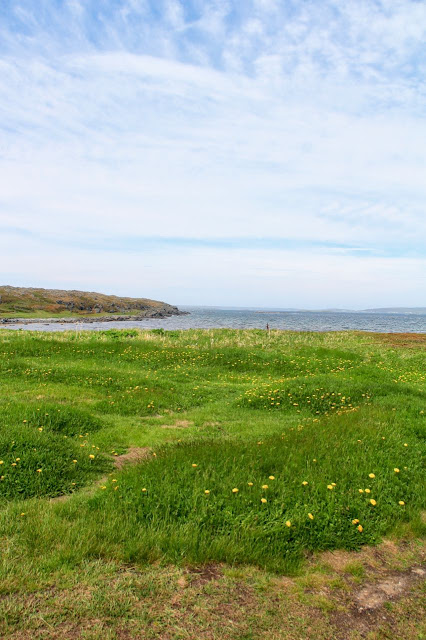
































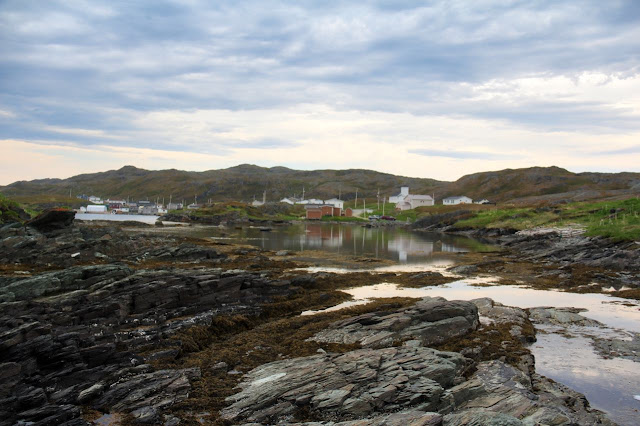





































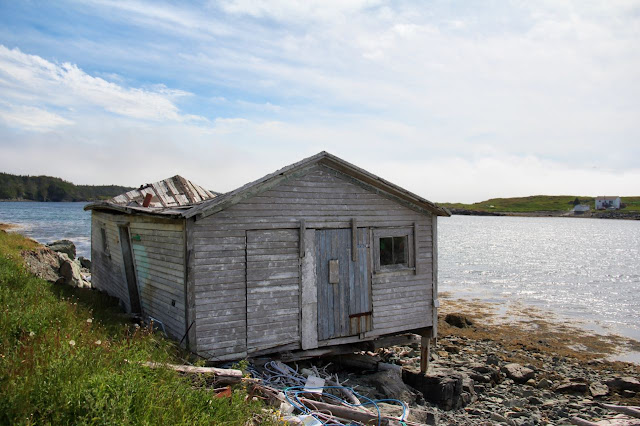





























































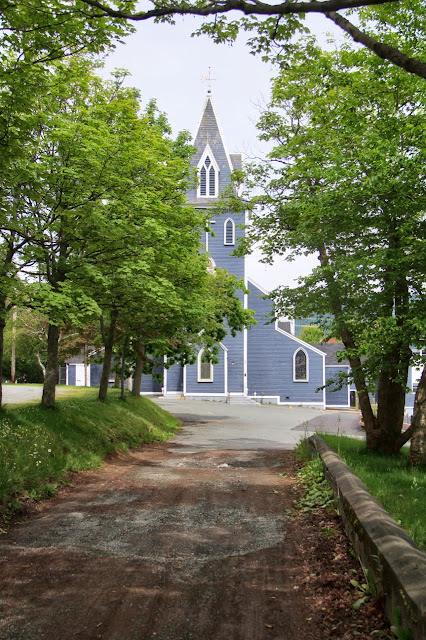






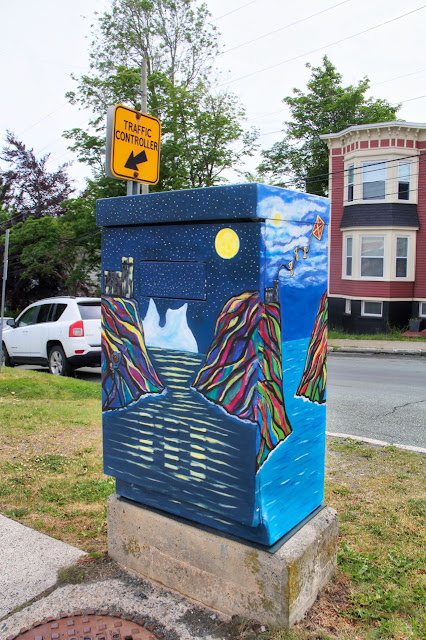























No comments:
Post a Comment